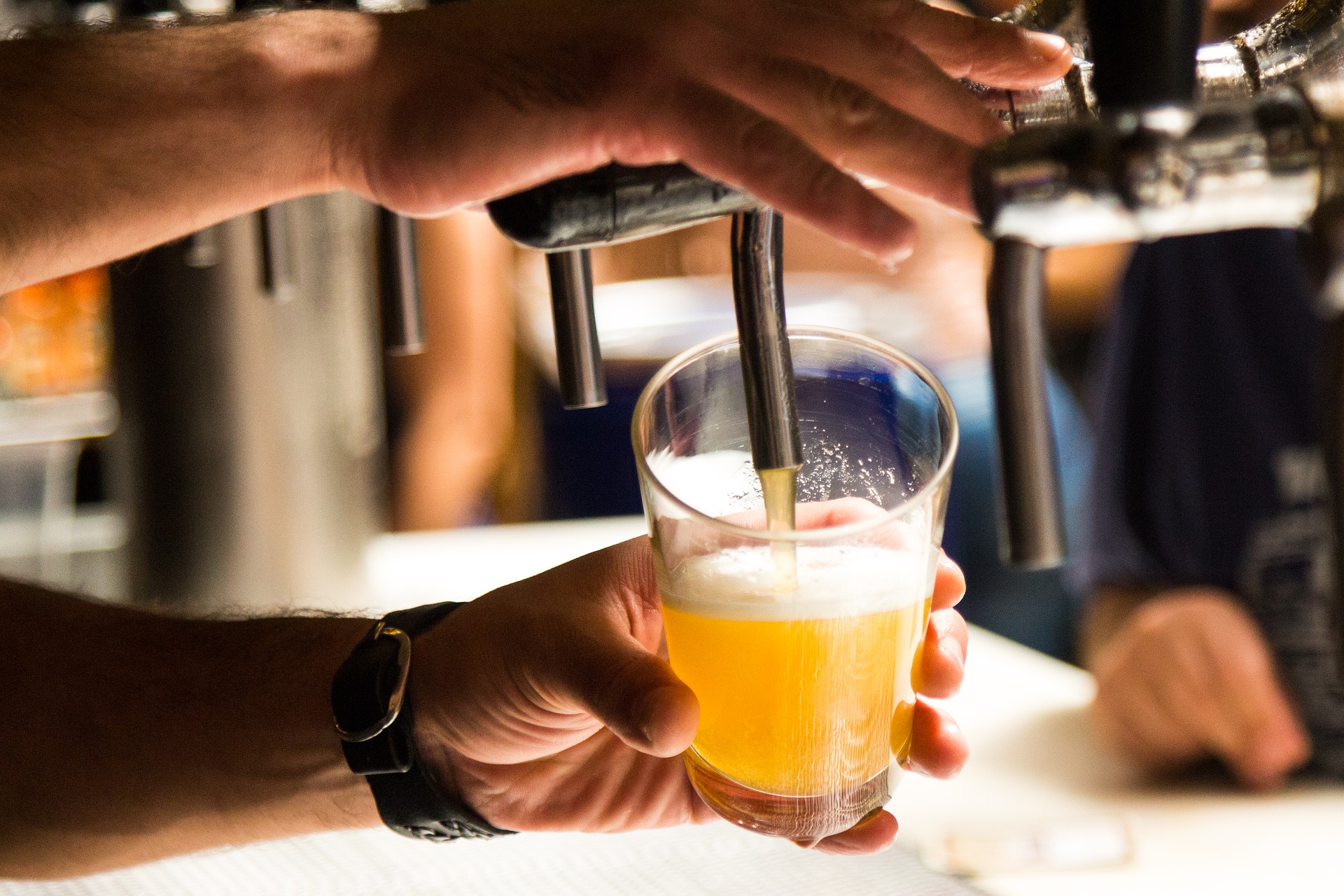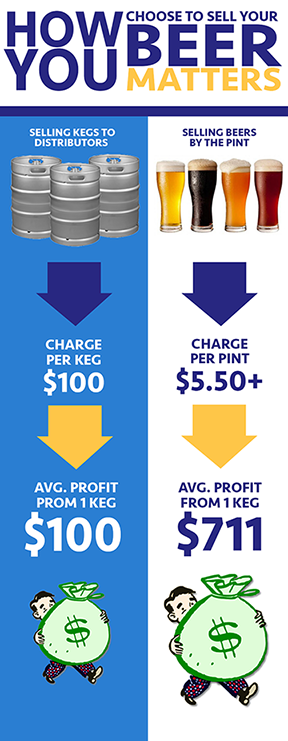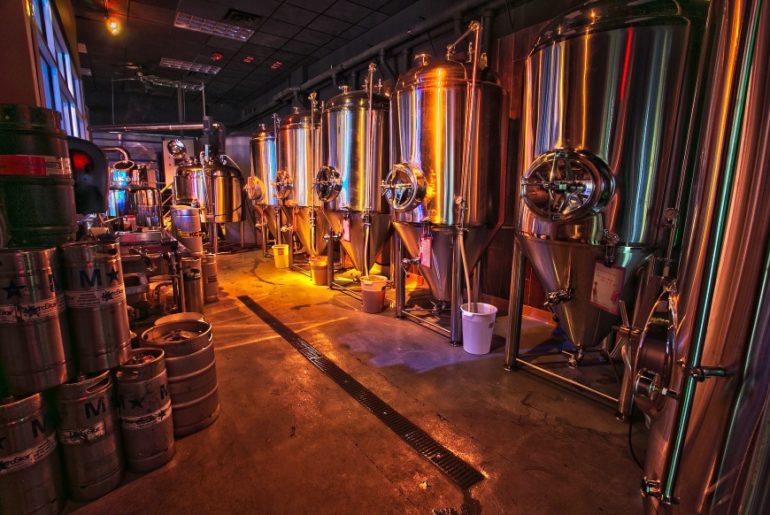 CURRENT TREND
CURRENT TREND
We are in the midst of a revolution in the brewing industry that is as important as the emergence of craft brewing in the 1980’s, or the repeal of prohibition in the 1930’s. It is the emergence of the tap-room, and the rise of Nano-brewing. According to the Brewers Association, the number of new breweries continues to grow rapidly in the U.S. As of November, there were a total of 5,005 breweries in the U.S., a new record high. That… is a lot of beer. While the amount of beer Americans consume has not changed, the WAY Americans consume it, has. Understanding this cultural sea of change is the key to succeeding economically as a brewer.
UNDERSTANDING THE ECONOMICS
The best way to understand the key to financial success is to understand the economics of your beer production. The way you choose to sell your beer, matters.
You can sell a half barrel keg to a distributor for $100, or you can sell your beer one pint at a time over the bar for $5.50 a pint, if not more. That works out to be at least $711 per keg[1]. By selling your beer through distribution, you are giving 85% of the value of your beer to the distributor and the retailer, and keeping only 15% for yourself.

Here is another way of looking at it. By developing a retail sales model, you can pay yourself 6 times more per barrel as a brewer than you could earn in a distribution model. You can make the same money by making only 15% of the beer. This simple lesson in economics makes the revolution in brewing easy to understand.
So what is driving this change? Beer is changing from a “Product” to an “Experience”. There is a difference between “buying a 6-pack” and “having a beer” with a friend. When you buy a six pack, you are purchasing a product that is similar to all the other products on the market. A six pack of Bud is not all that different from a six pack of Miller or a six pack of Coors. The choice comes down to price and availability. How cheap is the beer, and where can I get it? This is where distributors make their money; by bringing massive amounts of beer to every conceivable outlet… every grocery store, every convenience store, every corner market.
Contrast that to the experience of having a pint with a friend. People want these occasions to be special, social, and unique. You get together with a friend to make the evening enjoyable, you seek out an interesting place to meet, and you look for some new flavors to enjoy and discuss. The experience is about community, connecting with the important people in your life. It is also about the beer. What makes this beer special? What makes it different and unique? Those questions can be answered by the brewer behind the bar. When the consumer is in the tap room of the brewery, they can see where the beer is made. They can talk to the people who made it. Their connection to the beer is that much closer and more interesting. Their experience of the beer is that much richer.
LIMITATIONS:
The old craft beer model of distribution has hit some limits. There is a limit to the shelf space in a grocery store. There is a limit to the knowledge of the average convenience store clerk has about craft beer. The experience of buying craft beer in distribution can only get so interesting. This is why beer drinkers are seeking out something more in the form of a tap room. Craft beer is about connections. Connecting the beer drinker with the beer brewer, so the brewer can explain what they are trying to create with the beer, and the beer drinker can understand what drives the flavors, and how ingredients, and the brewing process and fermentation and temperature all combine to create wonderful flavors. Craft beer is about connecting the beer drinkers with their friends and neighbors. Bringing people together in a comfortable environment where conversation is encouraged, where people can be close to the important things in their lives. Close to work, close to home, close to friends, close to family. Craft beer is about connecting the flavors of beer with the flavors of food. The subtleties of flavor in the meat and the spices matching with the sweetness and bitterness of the brew. These connections are best made in a tap room.
This is all reflected by the recent growth of nano brewery tap rooms. The opportunity is vast and ongoing, because you do not have to battle other breweries for that limited shelf space and limited number of tap handles in the market. Instead of Joe’s Bar, there’s now Joe’s Brewery and Tap Room. There can be one in practically every neighborhood, with nearby residents taking great pride in “their” brewery. They patronize it by drinking a pint or two in the tap room or stopping on the way home to pick up a growler to go. By focusing on small, neighborhood tap rooms, new brewers are capitalizing on this wide open opportunity and fueling the continued growth of the craft beer market.
 This change in the way that beer is bought has a corresponding change in the way that beer is brewed. The brewery has to be scaled to the sales model. If beer in the taproom is worth 6 times more than beer in distribution, then the brewery has to be about 1/6th the size. Instead of a 50 barrel system, maybe you brew on a 10 barrel system. Instead of a 30 barrel system, maybe you brew on a 5 or a 7 barrel system. At Stout Tanks and Kettles, our customers are buying 2 to 10 bbl systems in much greater numbers than they were even a few years ago. Our brewery design consultants can talk you through the options available at every size of system.
This change in the way that beer is bought has a corresponding change in the way that beer is brewed. The brewery has to be scaled to the sales model. If beer in the taproom is worth 6 times more than beer in distribution, then the brewery has to be about 1/6th the size. Instead of a 50 barrel system, maybe you brew on a 10 barrel system. Instead of a 30 barrel system, maybe you brew on a 5 or a 7 barrel system. At Stout Tanks and Kettles, our customers are buying 2 to 10 bbl systems in much greater numbers than they were even a few years ago. Our brewery design consultants can talk you through the options available at every size of system.
But it’s more than just the size of the batches you brew. It’s about the quality of the beer you brew. If craft beer drinkers are going to pay top dollar for their experience of drinking a beer, they want the quality to be top notch as well. That means your small brewing system has to have all the capabilities of a large system, and more. You need to be able to do more with your small system than you could with a larger system. You need to brew more diverse styles, experiment with a variety of flavors. You need to highlight different ingredients. Your system has to be more flexible, and better designed than a system that creates thousands of barrels of the same beer every year.
We have been designing all of the key functionality of larger brewing systems into smaller breweries longer than anybody else. We have a wide variety of mash tuns, brew kettles, hot liquor tanks in all sizes. Our cellar tanks are designed to fit in the small spaces offered in today’s tap rooms. We can fit your fermenters and brite beer tanks in the tight spots of your brewery’s cellar.
No discussion of the economics of brewing is complete without a discussion of capital investments. Any investment in a brewery still has to earn a return on investment, no matter what the scale of the operation. If the size of your brewery is limited, your investment in capital also has to be proportional. Our engineers at Stout Tanks and Kettles have designed every size of our brewhouses to be as cost effective as possible. Because of our direct industry experience, we understand that that the capital investment in a small brewery system is directly related to the revenue that system produces. Our brewery design consultants can talk with you about the size of investment you are prepared to make in your small brewery, and how to get the most out of every dollar you spend. The plan for your brewery should be scaled financially to your sales strategy.
Stout Tanks and Kettles is here to help.
[1] Most pours in a taproom are somewhat less than 16 full ounces.

